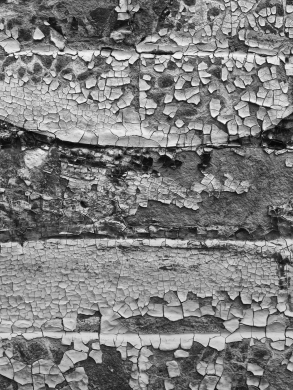Like many painters past and present, I have not always enjoyed circumstances that might provide the best conditions for making art. It’s not for me to judge whether artistic talent and product are improved by hardship or by privilege. However, I have been thinking lately about how choice of materials affects the longevity of an artwork after it leaves the artist’s hands.
In some cases in centuries past, artists under ideal conditions created works that faded over time either through ignorance, natural causes, or mishandling. Then again, some of our oldest surviving artworks have defied the odds by lasting longer and staying in better shape than works a fraction of their age. 500 years old and nibbled on by beetles over the centuries, da Vinci’s Lady survives thanks in part to his advanced techniques and technology.
Many 20th century works have already begun to show wear and tear, either because artists weren’t thinking that far into the future, or simply could not afford the best supplies and housing for their work. Sadly, in the modern art wing of most museums, one can already see cracked surfaces on works mere decades old, while the cave paintings pictured above have endured for thousands of years.
Some would argue that the cracks and discolorations on an old artwork give it a unique character lost when subjected to aggressive cleaning and reconstruction. Even with the most sophisticated techniques and scholarship, it’s often difficult to agree on exactly how the original appeared or should appear, and in conservation circles the debates rage on about how much is too much.
Then you have artists like Julian Beever, star of television’s “Concrete Canvas,” for whom transience is not the enemy but inspiration. Beever creates chalk drawings on pavement in public spaces around the world, spending days on two dimensional compositions that have depth when viewed through a camera. Erased soon after he leaves, they still leave a lasting impression. It makes you wonder – what makes art last?
Brian Sylvester is a guest blogger on WallSpin, and an artist on Zatista.
Related articles
- Five Things That Changed the Art World (zatista.com)
- Color in Art and Moods (zatista.com)
- The Art of Work and the Work of Art (zatista.com)
- Art in the Danger Zone (zatista.com)








Comments (0)